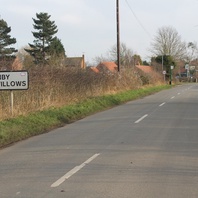
Viking Names
Barnby in the Willows
Barnby in the Willows, in the Newark Wapentake of Nottinghamshire, most likely comes from the Old Norse elements barn ‘child’ and by ‘farm, settlement’. Its meaning, ‘farmstead of the children’, may indicate joint inheritance by the offspring. Alternatively, the first element of the name could come from the Old Danish male personal name Barni. The affix is added at a later date and means ‘among the willow-trees’ and could be connected to its low location by the river Witham. The place-name has the same etymology as Barnby Moor, in the Bassetlaw Wapentake of Nottinghamshire.
Read More
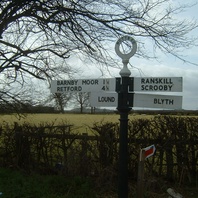
Viking Names
Ranskill
Ranskill, in the Bassetlaw Wapentake of Nottinghamshire, probably comes from the Old Norse male personal name Hrafn (which is also the word for ‘raven’) and the Old Norse element skjalf ‘seat, ledge, slope’. It is on a slight slope above the level ground.
Read More

Viking Names
Revesby
Revesby, in the Bolingbroke Wapentake of Lincolnshire, comes from the Old Norse male personal name Refr (which is also the word for ‘fox’) and the Old Norse element by ‘farm, settlement’.
Read More
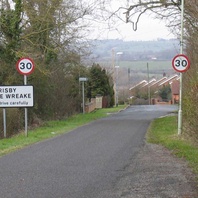
Viking Names
Frisby on the Wreake
Frisby on the Wreake, in the East Goscote Hundred of Leicestershire, takes its name from a Scandinavian form of an ethnonym Frisa (gen. pl.) ‘Frisians’ and the Old Norse element by ‘farmstead, village’. The affix ‘on the Wreake’ was added at a later date to distinguish this Frisby from another in the Gartree Hundred of Leicestershire and refers to the site’s location on the river, adjacent to Kirby Bellars. Traditionally, the place-name has been interpreted as referring to Frisians who took part in the Viking invasions. However, the exact implications of such a name are not yet fully understood and are the subject of ongoing work by Dr Jayne Carroll of the Institute for Name-Studies, University of Nottingham.
Read More
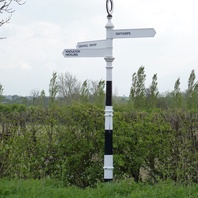
Viking Names
Owthorpe
Owthorpe, in the Bingham Wapentake of Nottinghamshire, comes from the Old Norse male personal name Úfi and the Old Norse element þorp ‘a secondary settlement, a dependent outlying farmstead or hamlet’.
Read More
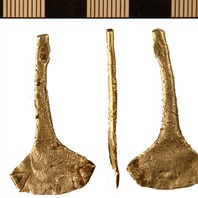
Viking Objects
Probable Thor’s Hammer Pendant (NLM-1A6811)
These may have been worn to show devotion to the god Thor, or to secure the god’s protection, although there is little evidence to support this interpretation. Pendants like this have been found made of lead, copper alloy, silver and gold, as well as other materials, showing that many different strata of society could have worn them. For more information on Scandinavian jewellery in England check out our blog: Brooches, Pendants and Pins: Scandinavian Dress Accessories in England.
Read More
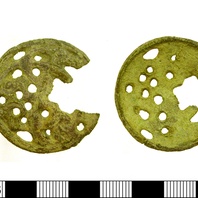
Viking Objects
Jellinge-Style Disc Brooch (LEIC-A30166)
This brooch has been classed under the Jansson Type I A1 category with decoration consisting of an openwork Jellinge design depicting an intertwined ribbon-like beast. For more information on Scandinavian jewellery in England check out our blog: Brooches, Pendants and Pins: Scandinavian Dress Accessories in England.
Read More
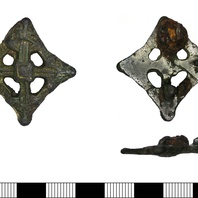
Viking Objects
Lozenge Brooch (DENO-752641)
This cast copper-alloy brooch is lozenge-shaped with openwork decoration. Brooches of this type have been found in both the Danelaw and in Scandinavia and are dated to the ninth to tenth centuries. For more information on Scandinavian jewellery in England check out our blog: Brooches, Pendants and Pins: Scandinavian Dress Accessories in England.
Read More
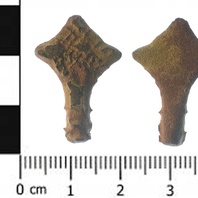
Viking Objects
Kite-Shaped Pin (SWYOR-53AEC4)
This type of kite-shape-headed pin is considered to be of Irish origin and imported through Viking activities.
Read More
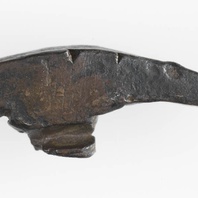
Viking Objects
Silver Thor’s Hammer Pendant (CM_1841_2008)
This is a high quality hammer-head section of a silver Thor’s hammer pendant. These may have been worn to show devotion to the god Thor, or to secure the god’s protection, although there is little evidence to support this interpretation. Pendants like this have been found made of lead, copper alloy, silver and gold, showing that many different strata of society could have worn them. For more information on Scandinavian jewellery in England check out our blog: Brooches, Pendants and Pins: Scandinavian Dress Accessories in England.
Read More
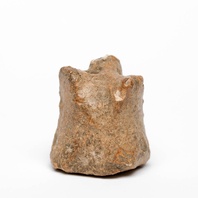
Viking Objects
Lead Gaming Piece (CM.574-2010)
This solid sub-circular based lead gaming piece has three projections on the top. This and similar pieces have also been interpreted as weights although the gaming piece interpretation is more secure. Pieces like this would have been used to play hnefatafl and/or Nine Men’s Morris, both of which are known to have been played in Scandinavia in the Viking Age.
